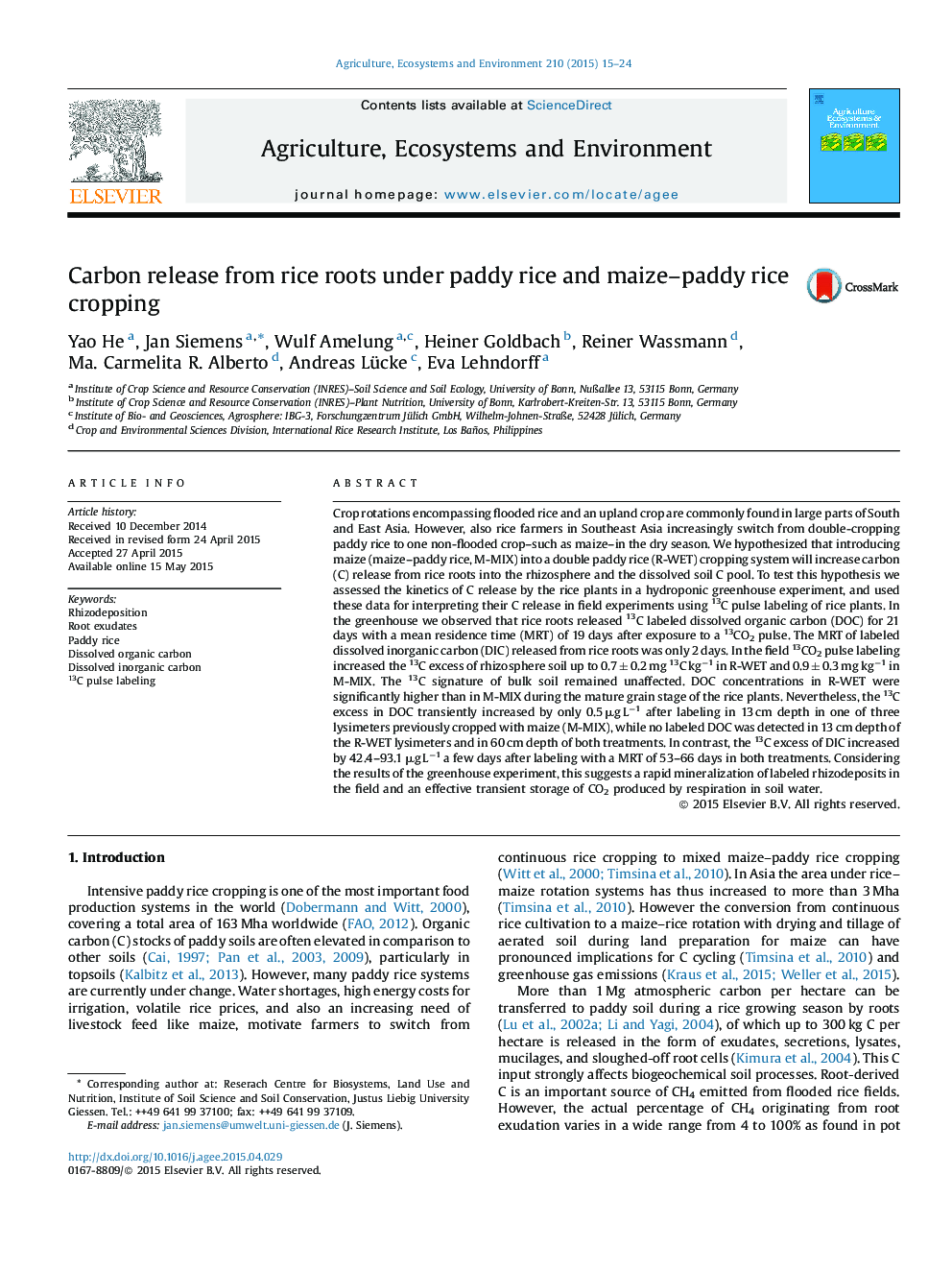| کد مقاله | کد نشریه | سال انتشار | مقاله انگلیسی | نسخه تمام متن |
|---|---|---|---|---|
| 2413703 | 1552042 | 2015 | 10 صفحه PDF | دانلود رایگان |

• Little, if any, increase of carbon release by rice roots following maize cropping.
• Dissolved organic carbon released by roots is rapidly mineralized in soil.
• CO2 from root respiration and mineralization is trapped as dissolved bicarbonate.
Crop rotations encompassing flooded rice and an upland crop are commonly found in large parts of South and East Asia. However, also rice farmers in Southeast Asia increasingly switch from double-cropping paddy rice to one non-flooded crop–such as maize–in the dry season. We hypothesized that introducing maize (maize–paddy rice, M-MIX) into a double paddy rice (R-WET) cropping system will increase carbon (C) release from rice roots into the rhizosphere and the dissolved soil C pool. To test this hypothesis we assessed the kinetics of C release by the rice plants in a hydroponic greenhouse experiment, and used these data for interpreting their C release in field experiments using 13C pulse labeling of rice plants. In the greenhouse we observed that rice roots released 13C labeled dissolved organic carbon (DOC) for 21 days with a mean residence time (MRT) of 19 days after exposure to a 13CO2 pulse. The MRT of labeled dissolved inorganic carbon (DIC) released from rice roots was only 2 days. In the field 13CO2 pulse labeling increased the 13C excess of rhizosphere soil up to 0.7 ± 0.2 mg 13C kg−1 in R-WET and 0.9 ± 0.3 mg kg−1 in M-MIX. The 13C signature of bulk soil remained unaffected. DOC concentrations in R-WET were significantly higher than in M-MIX during the mature grain stage of the rice plants. Nevertheless, the 13C excess in DOC transiently increased by only 0.5 μg L−1 after labeling in 13 cm depth in one of three lysimeters previously cropped with maize (M-MIX), while no labeled DOC was detected in 13 cm depth of the R-WET lysimeters and in 60 cm depth of both treatments. In contrast, the 13C excess of DIC increased by 42.4–93.1 μg L−1 a few days after labeling with a MRT of 53–66 days in both treatments. Considering the results of the greenhouse experiment, this suggests a rapid mineralization of labeled rhizodeposits in the field and an effective transient storage of CO2 produced by respiration in soil water.
Journal: Agriculture, Ecosystems & Environment - Volume 210, 1 December 2015, Pages 15–24